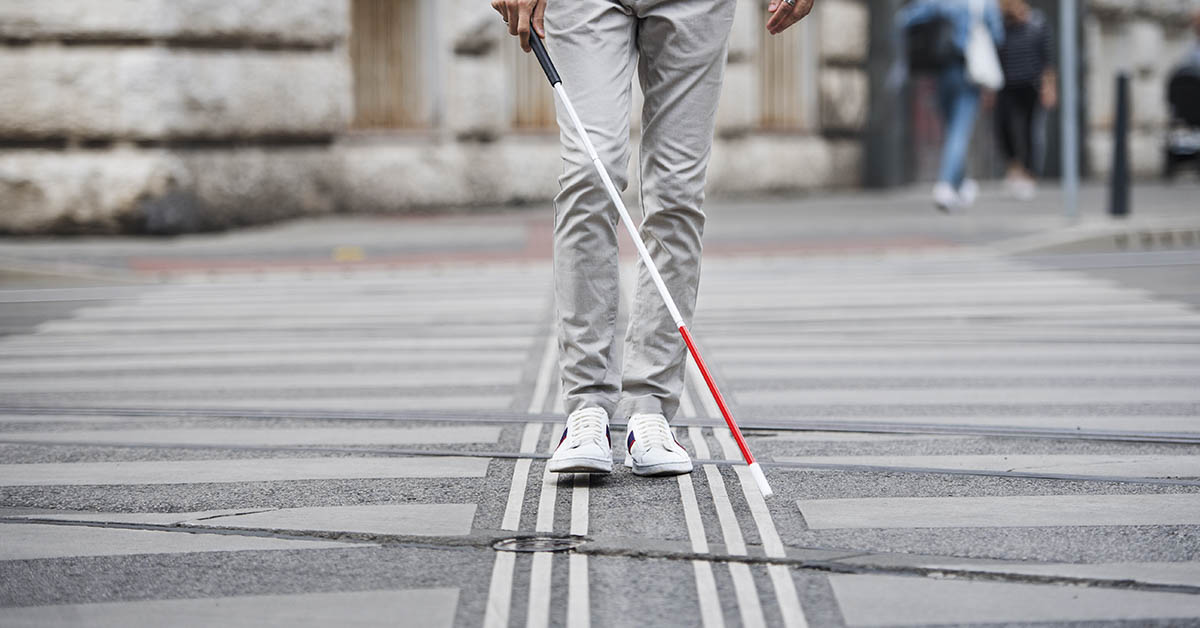According to the CDC’s 2022 National Diabetes Statistics Report, over 11% of the U.S. population has diabetes. (That’s about 37.3 million people.) Plus, 96 million people aged 18 or older (38% of the the U.S. population) have prediabetes. [1] These numbers are alarming next to a new press release from Prevent Blindness: Diabetes is the leading cause of new blindness in adults aged 18 to 64. [2]
How Diabetes Can Lead to Blindness
Dr. Daniel Laroche, a top New York City eye specialist, explains that many people with diabetes may not be aware the disease can damage their vision. Nevertheless, annual eye dilated examinations are crucial to detect diabetic retinopathy early and begin treatment. Diabetic retinopathy is an eye condition that occurs when blood vessels in the retina become damaged as a result of high blood sugar levels. Too much sugar in the blood over time can damage blood vessels all over the body, but when it hurts the retina, it affects vision.
Maintaining healthy sugar levels can prevent this condition. Regardless, regular eye examinations are imperative since diabetic retinopathy doesn’t usually show any symptoms during the early stages. They tend to appear after the condition has progressed, and they include blurred vision, eye floaters, difficulty seeing colors, poor night vision, streaks or patches in the person’s vision, a dark or empty spot in the center of their vision, and a sudden loss of vision entirely. [3]
Therefore, regular appointments (at least once a year or as directed by a doctor) are needed to screen and prevent these symptoms from developing. However, a typical eye appointment may not be thorough enough to detect diabetic retinopathy. “A lot of times, you can go to an optical shop for eyeglasses where they’ll just check your prescription and check for the eyeglasses. They may not necessarily do a more in-depth examination, a dilated examination, where we put drops in your eyes and deluge the pupils to look at the larger view of the lens inside the eye, the retina, the optic nerve to look for pathology like diabetic retinopathy, glaucoma, other types of retinopathy,” Laroche said. [4]
Read: Scientists Have Discovered a New Set of Blood Groups
Diagnosing and Treating Diabetic Retinopathy
Although anyone with diabetes can develop diabetic retinopathy, the risk increases if the person has high cholesterol, high blood pressure, or uncontrolled blood sugar levels. Risk factors also include people who’ve had diabetes for a long time, smoke regularly, or are pregnant.
Eye specialists, called ophthalmologists, search for signs of diabetic retinopathy through dilated eye exams. The examinations involve placing eye drops into the patient’s eyes and taking specialized photographs of the interior of the eyes, which would show signs of damage or abnormalities.
Ophthalmologists may also use an examination called fluorescein angiography, which involves injecting a dye called fluorescein into the patient’s arm; the dye will circulate the eyes and indicate which blood vessels are abnormal, broken, or blocked — important information for upcoming laser treatments or medicinal injections. Specialists may also use a noninvasive imaging scan called optical coherence tomography before and after treatments to monitor the retina’s progress and check for swelling or cysts.
Treatment depends on the stage and severity of the damage, and the effectiveness of previous treatments. After the initial diagnosis, doctors may choose to observe the eyes without intervening for a period of time. Remember, it’s vital for people to control their sugar levels under the guidance of their doctors. Proper blood sugar control can considerably slow the development of diabetic retinopathy. As of now, there are three main options for treatment: laser treatment, injections, and surgery. However, most advanced cases require surgical treatment. [5]
Prevention
“An ounce of prevention is worth a pound of cure” is an apt summation when it comes to diabetic retinopathy. Good management of blood sugar level is key, as well as attending eye examinations at least once a year. Since high cholesterol and high blood pressure increase the risk, work with doctors to combat these problems. This may include eating a healthy and balanced diet, exercising regularly, and reaching or maintaining a healthy body weight.
Additionally, quit smoking, since it worsens these issues, and it creates its own risk factor, since smoking can damage blood vessels. If you have diabetes and you experience vision problems, contact your healthcare provider as soon as possible. Seek immediate help if you experience symptoms like blurred vision, flashes of light, black spots or empty spots in your vision. [6]
Keep Reading: Poorest Americans drink a lot more, sugary drinks than the richest – could a tax help with health inequalities?
Sources
- “National Diabetes Statistics Report.” CDC. June 29, 2022
- “Sheets, Social Media Graphics and PowerPoint Presentations to Educate Public on the Potential Effects that Diabetes May Have on Vision.” Prevent Blindness. October 27, 2022
- “What to know about diabetic retinopathy.” Medical News Today. Adam Felman. November 11, 2020
- “Diabetes is leading cause of new blindness in adults.” Kens5. Dominique Newland. November 13, 2022
- “What to know about diabetic retinopathy.” Medical News Today. Adam Felman. November 11, 2020
- “Diabetes and Your Eyes: What You Need to Know.” Johns Hopkins. Cindy Xinji Cai, M.D.

